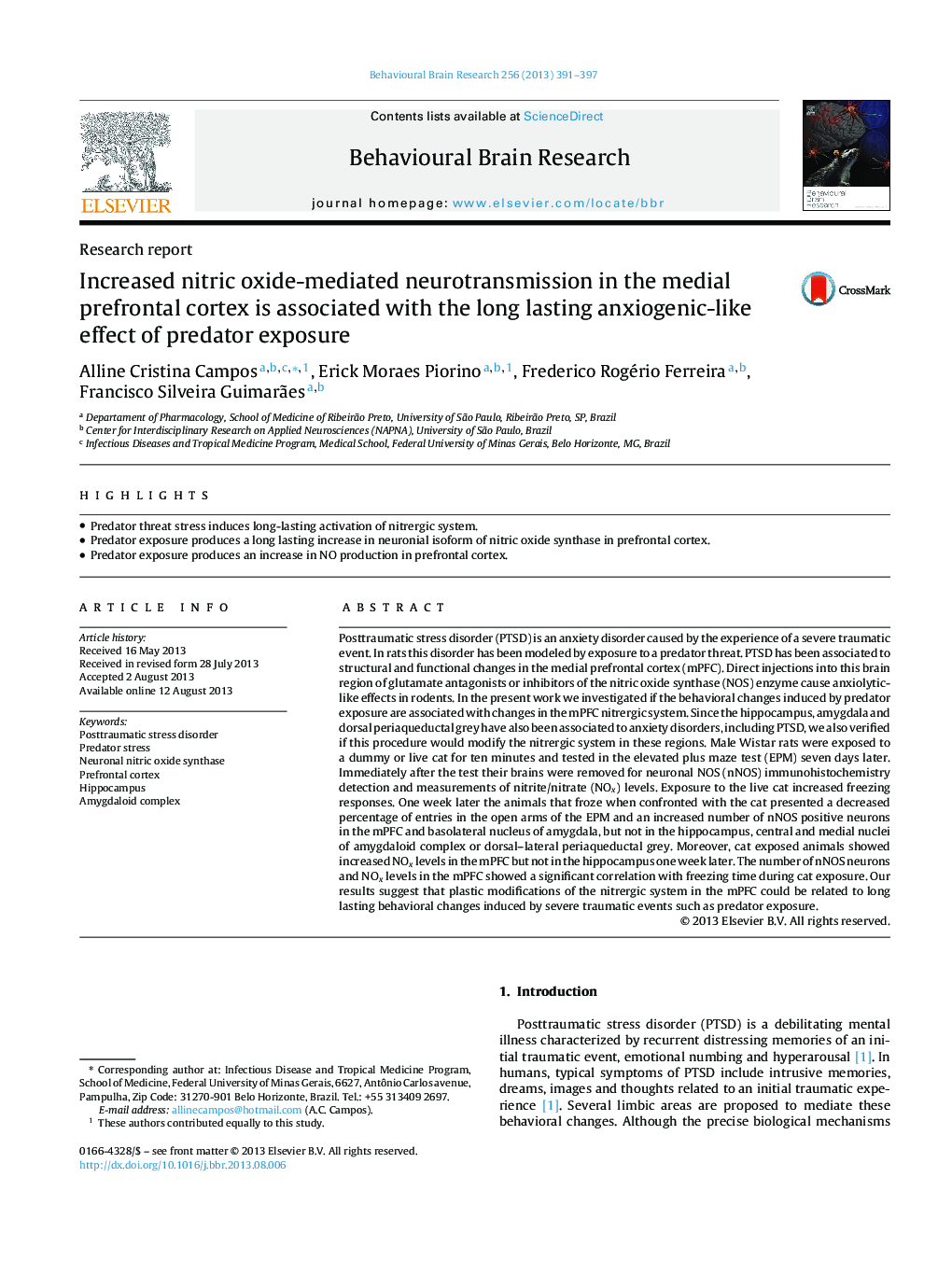| کد مقاله | کد نشریه | سال انتشار | مقاله انگلیسی | نسخه تمام متن |
|---|---|---|---|---|
| 6258825 | 1612976 | 2013 | 7 صفحه PDF | دانلود رایگان |

- Predator threat stress induces long-lasting activation of nitrergic system.
- Predator exposure produces a long lasting increase in neuronial isoform of nitric oxide synthase in prefrontal cortex.
- Predator exposure produces an increase in NO production in prefrontal cortex.
Posttraumatic stress disorder (PTSD) is an anxiety disorder caused by the experience of a severe traumatic event. In rats this disorder has been modeled by exposure to a predator threat. PTSD has been associated to structural and functional changes in the medial prefrontal cortex (mPFC). Direct injections into this brain region of glutamate antagonists or inhibitors of the nitric oxide synthase (NOS) enzyme cause anxiolytic-like effects in rodents. In the present work we investigated if the behavioral changes induced by predator exposure are associated with changes in the mPFC nitrergic system. Since the hippocampus, amygdala and dorsal periaqueductal grey have also been associated to anxiety disorders, including PTSD, we also verified if this procedure would modify the nitrergic system in these regions. Male Wistar rats were exposed to a dummy or live cat for ten minutes and tested in the elevated plus maze test (EPM) seven days later. Immediately after the test their brains were removed for neuronal NOS (nNOS) immunohistochemistry detection and measurements of nitrite/nitrate (NOx) levels. Exposure to the live cat increased freezing responses. One week later the animals that froze when confronted with the cat presented a decreased percentage of entries in the open arms of the EPM and an increased number of nNOS positive neurons in the mPFC and basolateral nucleus of amygdala, but not in the hippocampus, central and medial nuclei of amygdaloid complex or dorsal-lateral periaqueductal grey. Moreover, cat exposed animals showed increased NOx levels in the mPFC but not in the hippocampus one week later. The number of nNOS neurons and NOx levels in the mPFC showed a significant correlation with freezing time during cat exposure. Our results suggest that plastic modifications of the nitrergic system in the mPFC could be related to long lasting behavioral changes induced by severe traumatic events such as predator exposure.
Journal: Behavioural Brain Research - Volume 256, 1 November 2013, Pages 391-397